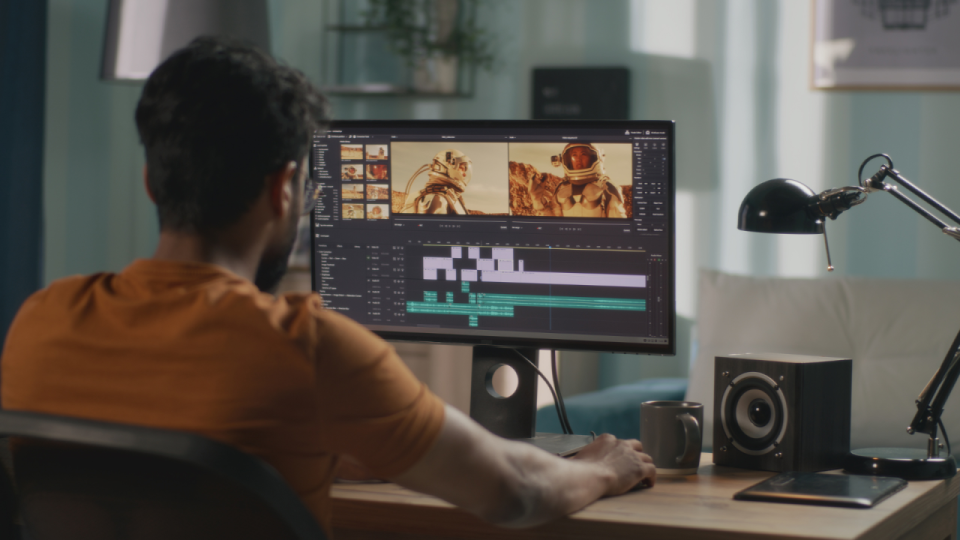Have you ever found yourself watching a video in a quiet waiting room with the sound off? Or maybe you’ve struggled to follow a podcast because of the background noise on a busy commute? If so, you’ve experienced firsthand why captions are becoming increasingly essential in our digital world.
With around 18 million people in the UK who are deaf or experience hearing loss, including tinnitus, captions are vital for accessibility. But, as with most accessibility considerations, their benefits reach far beyond this important purpose. They’ve become a game-changer for all of us in how we consume digital content.
Captions Boost Understanding and Retention
Think about how often you scroll through social media with your sound muted. Have you ever considered how important those first few seconds of a video are? If there are no captions, you’re likely to keep scrolling. Content creators are quickly realising that, without captions, they’re potentially losing a massive chunk of their audience before they’ve even had a chance to engage them. This issue has become increasingly important as public support grows for introducing fines targeting individuals who play music or videos out loud on public transport.
Captions can also help us better understand and remember information. When we process content through multiple channels – seeing, hearing, and reading simultaneously – our brains are more likely to retain that information and less likely to become distracted. For example, students who watch educational videos with captions typically perform better on tests than those who watch the same content without captions.
And what about TV? How many of us have turned on captions while watching our favourite drama with complicated dialogue or a mumbled line? Or perhaps when trying to catch every word of a character’s speech in a strong regional accent? Captions have become a comfort feature that enhances our viewing experience across the board.
For people learning English, captions bridge the gap between hearing unfamiliar words and understanding their meaning and context. Even native English speakers benefit when encountering specialised terminology or unfamiliar accents. It’s like having a helpful translator right on your screen.
Captions and SEO
From a business perspective, there’s another compelling reason to embrace captions: they make your content more discoverable. Search engines can’t watch videos, but they can certainly read text. By adding captions, you’re essentially providing Google (and other search engines) with valuable content to index, potentially boosting your rankings and helping more people find your content.
Creating good captions isn’t just about dumping text on screen. Timing matters enormously – captions that race by too quickly or linger too long can be frustrating. A poorly timed caption can ruin a punchline or the suspense of a scene. Ideally, captions should be perfectly synchronised with the audio, limited to one or two lines at a time, and include any significant sounds, like [door slams] or [dramatic music plays], when they’re relevant to understanding what’s happening. They’re the video equivalent of alt text for images.
Automation and the Need for Human Review
While automated captioning tools have improved tremendously, they can still struggle with accents, some technical terminology, and background noise. Just like us, automated captions also rely on the quality of the audio to understand what is being said. Like many tools, automatic captions are great as a starting point – they do most of the hard work – but the advice is to always have a human review them for accuracy.
What’s particularly encouraging is seeing more and more content creators build captioning into their production process from the beginning, rather than treating it as an afterthought. This so-called shift-left is happening across many places and reflects a deeper understanding that inclusive design isn’t just about compliance or ticking boxes – it’s about creating better experiences for everyone.
The Curb-Cut Effect: Accessibility Benefits Us All
When we design with accessibility in mind, we often end up with solutions that benefit all users. This phenomenon is sometimes called the “curb-cut effect” – named after the slopes in pavements down to road-level (we call them drop kerbs in the UK) originally designed for wheelchair users that turned out to be equally helpful for parents with pushchairs, travellers with luggage, delivery drivers, and countless others.
By embracing captions, we’re not only making our content more accessible but also more effective, engaging, and valuable for everyone.
So, next time you’re creating digital content, remember that adding captions isn’t just about compliance – it’s about connection. It’s about making sure your message reaches your widest possible audience.
How accessible is your website? Find out with our free accessibility checker, or contact Accessibility-Services@Shaw-Trust.org.uk.







